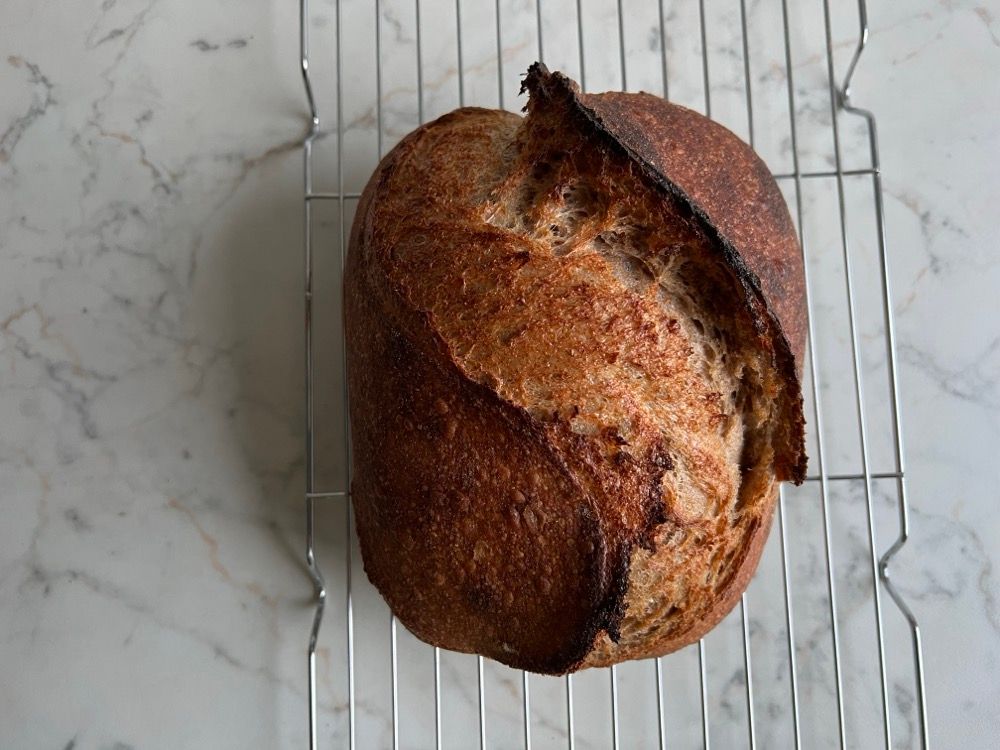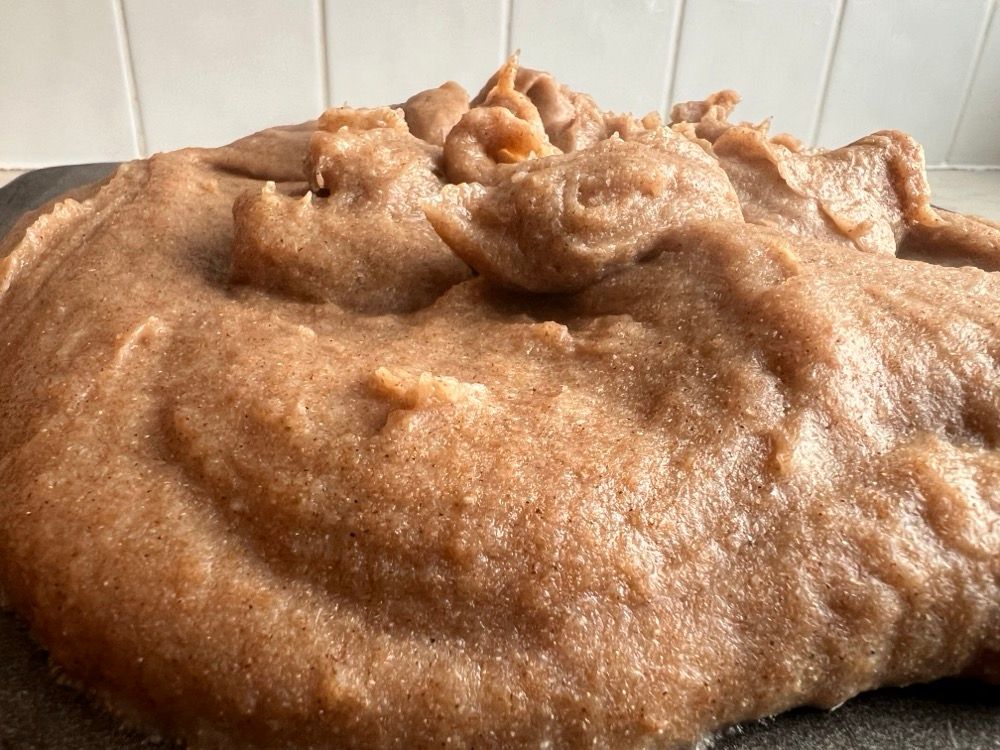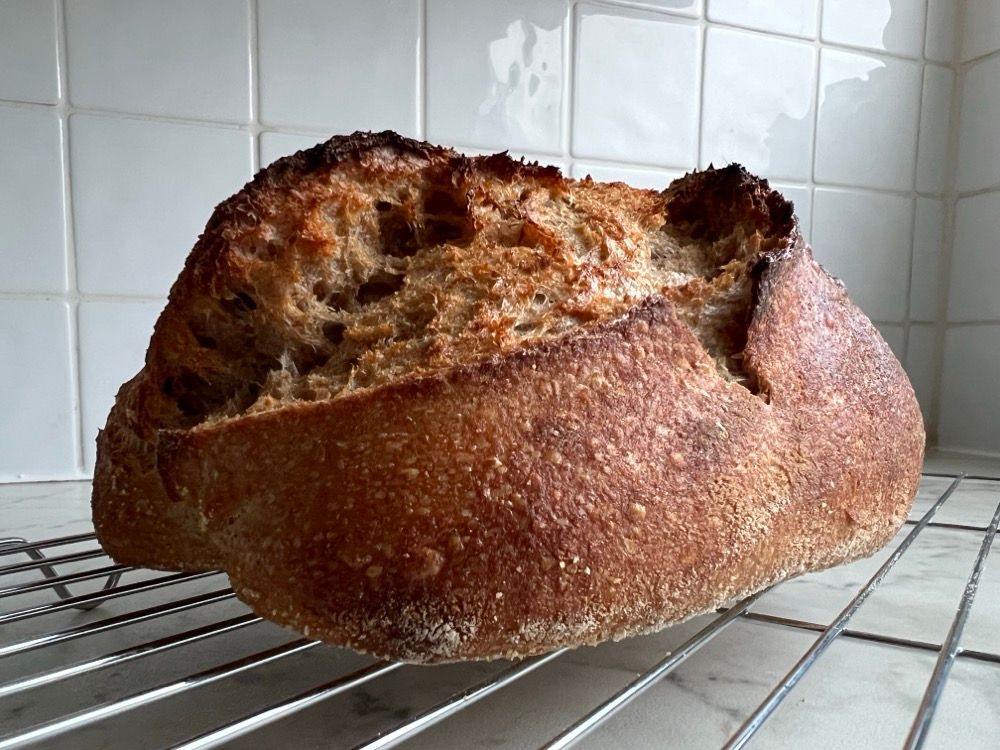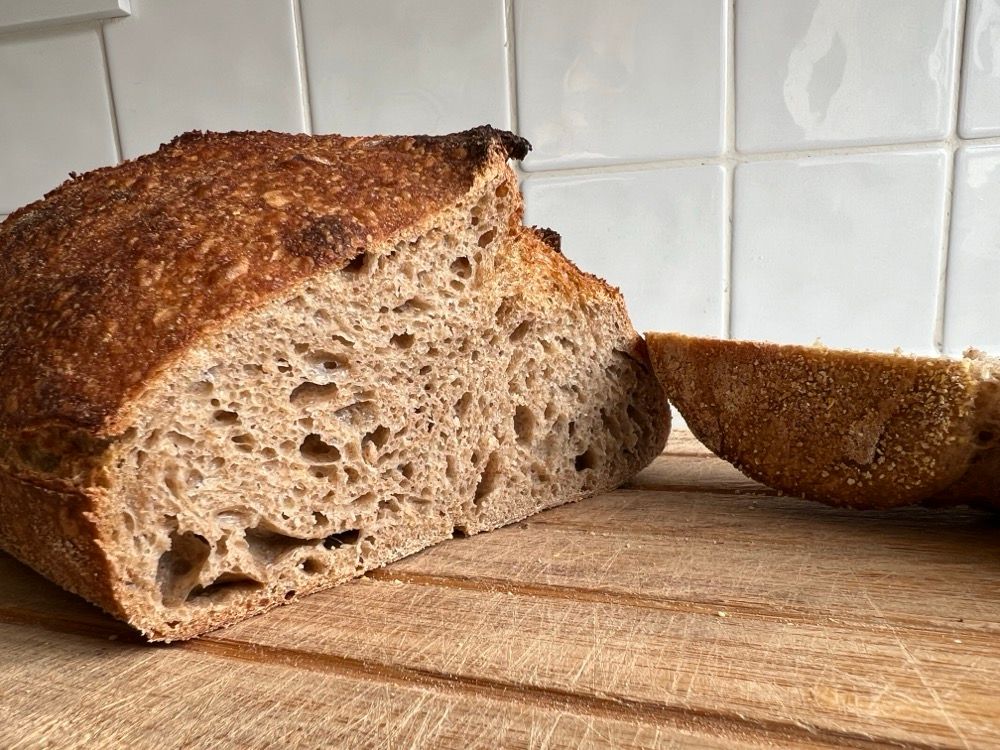
One of my favourite loaves contains almond and oat porridge. The porridge gives the crumb incredible softness and moisture and the almonds a bit of crunch.
I’ve just finished reading Chad Robertson and Jennifer Latham’s bread book and Robertson talks about scalding flour:
Scalded flour (also known as gelatinized flour or porridge): This describes flour that has been heated with two to four times its weight in water so the starch molecules burst and the vegetable gums are released and then gel. Adding scalded flour to bread dough creates a custardy texture and increases the shelf life of the baked bread by adding an extra portion of hydration bound by the gelled starch vegetable gums—essentially a way of cheating the math of traditional dough hydration to give you a crumb that retains moist texture much longer than it would without the addition.
Making the oat porridge was effectively scalding the oats. Bad oats (I know I know, that’s scolding).
I thought I’d scald some rye flour and make a lighter version of the Merton rye 15 but as it turned out I used wholewheat semolina flour instead. I cooked it at 1 part semolina to 3 parts water and it turnd out to be a golden yellow colour bordering on orange:
 semolina flour scald: not very appetising looking
semolina flour scald: not very appetising looking
I lowered the hydration of the loaves a bit (to account for the extra hydration from the scald) and instead of using just strong white flour I made a half-half mix of white and wholemeal flours. I used the following ratios (as baker percentages, which means the quantity of each ingredient expressed as a percentage of the total amount of dry flour):
The bread baked beautifully. The crumb is moist, light and almost delicate, and the flavour is nutty and sweet.
This is the Merton Semolina Scald.



Allergens: cereals that contain gluten. All Merton bread is made in close proximity to almonds and sesame seeds. Further details at mertonbakery.com/allergens.
 friday not saturday
friday not saturday